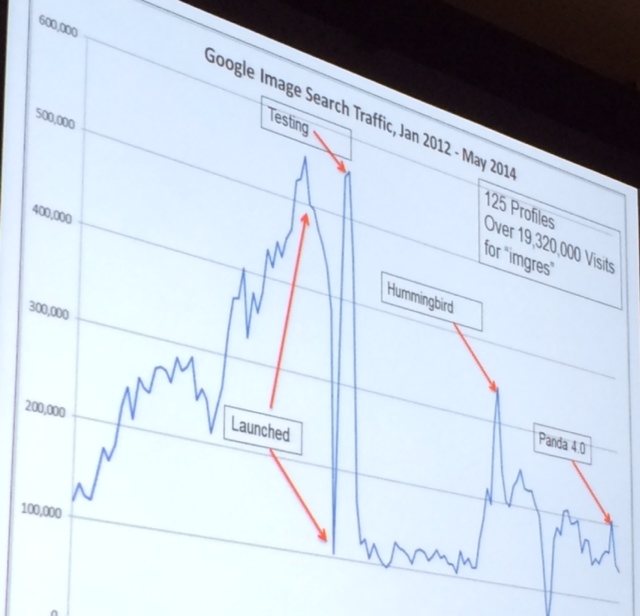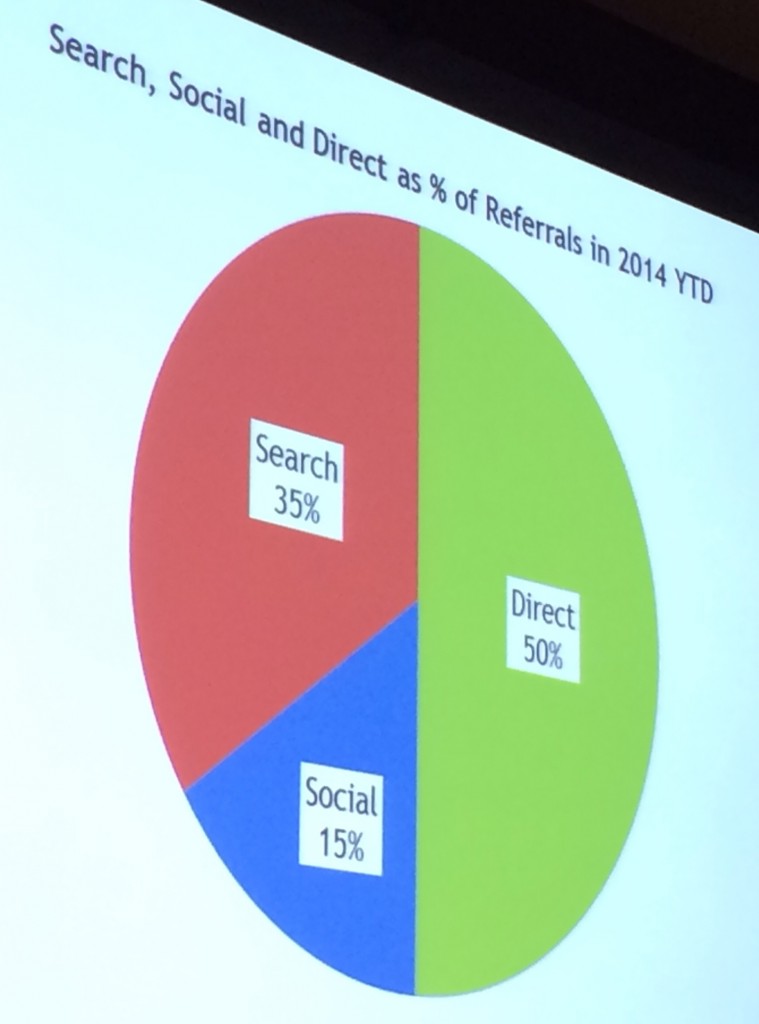SMX East Liveblog: SEO Is Never Dead — Marshall Simmonds
In this opening Summit session at SMX East, the SEO thought-leading veteran Marshall Simmonds puts to rest the popular critique of search engine optimization, “SEO is dead.” He explains: “If Google is constantly changing, we [search marketers] have to be constantly moving to meet those changes. SEO can never have a beginning, middle and end because it’s constantly changing. The second upper management believes SEO is dead is the moment you start failing.”

Speaker: Marshall Simmonds, founder and CEO, Define Media Group, Inc. (@mdsimmonds)
Marshall Simmonds focuses on bringing search strategy to enterprise businesses. Today he’s going to talk about the constant battle that the search industry is in. No, SEO is NEVER dead.
Google said it’s made 530 improvements this year already to its search. Google has found 30 trillion unique URLs on the web and processes 100 billion searches every month. This is the last info we’ve gotten from Google (not the most transparent organization ever). For more, we have to look elsewhere.
Elsewhere is … Dr. Pete Meyers. @dr_pete takes the temperature for Moz every day. Moz keeps track of these updates.
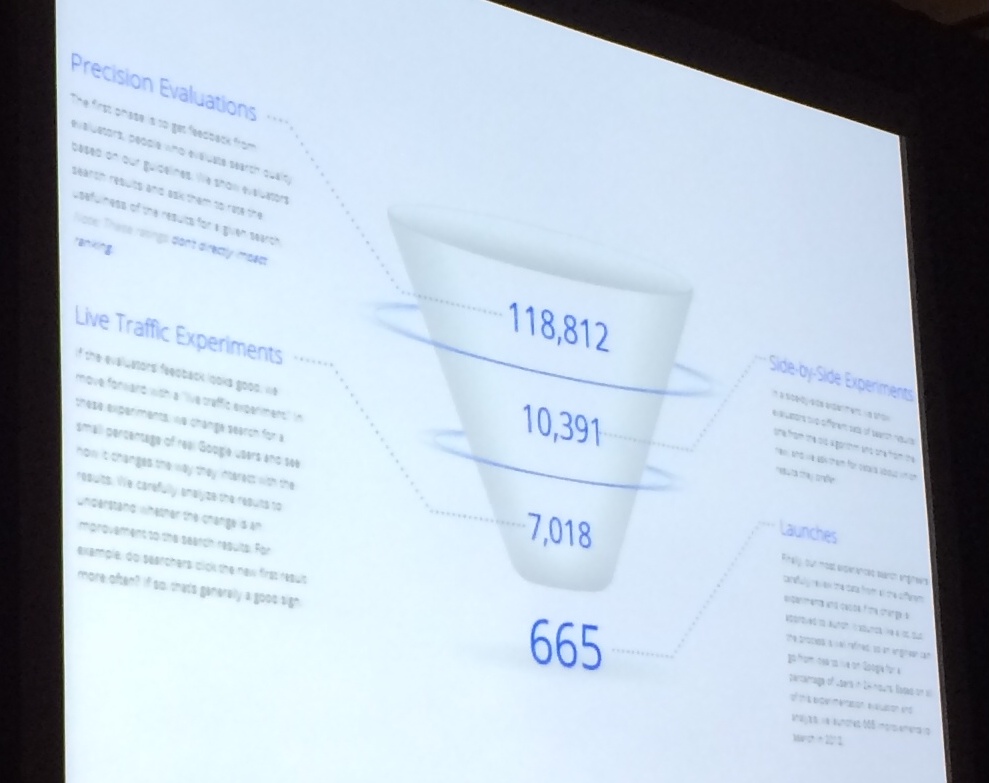
The next slide is stark white with simple black text. He says this is the most important slide in the deck: “SEO is not a project”
If Google is constantly changing, we have to be constantly moving to meet those changes. SEO can never have a beginning, middle and end because it’s constantly changing. The second upper management believes SEO is dead is the moment you start failing. Here’s a comparison of the same SERP taken a month apart.
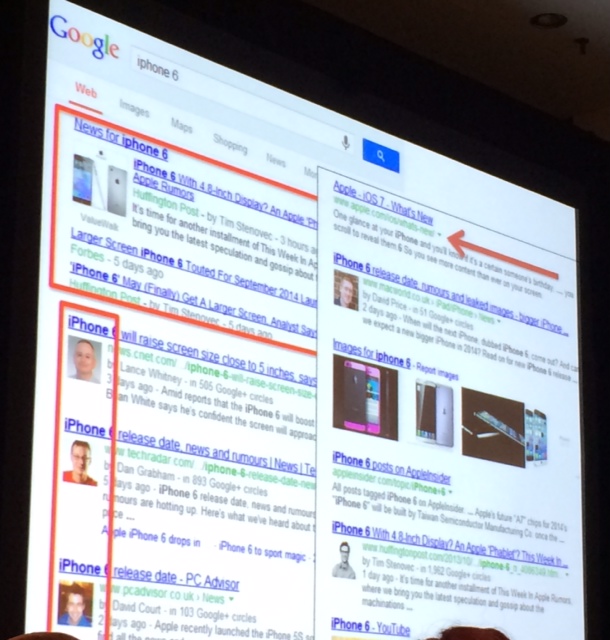
Look at the Knowledge Graph and Dr. Pete’s article “The Day the Knowledge Graph Exploded” to get into that feature.
A graph of one box popularity shows that video results are showing in SERPs 65-80% of the time. Presence of images in SERPs have surged year over year. There’s also a different, personalized search experience based on the browser. If SEO is dead, Google needs to stop innovating — and there are no signs that’s happening.
The rest of this talk will dive into 3 things that need a little more unpacking to understand how SEO is changing and how SEOs should adapt: Market share, image search, log file analysis.
1. Market Share of Google
Google sites have 67.3% of search market share as of August 2014 according to comScore. Simmonds says that’s number’s wrong. SEMPO survey shows that SEO budgets haven’t changed. Define Media Group (Simmond’s company) research shows that Google search market share is 86%. This is based on 15.24 billion search referral page views.
Something complicating the market share question: Social vs. Search. Social is presenting data sexier than search can, with tools like Topsy that analyze sentiment.
Jonah Peretti, BuzzFeed CEO and SMX East keynote speaker, wrote an article that showed their Facebook referral had overtaken Google and made the point that Facebook was more powerful than Google. Simmonds did the research himself again. Finding: Social referrals are growing, but not at the rate of search!
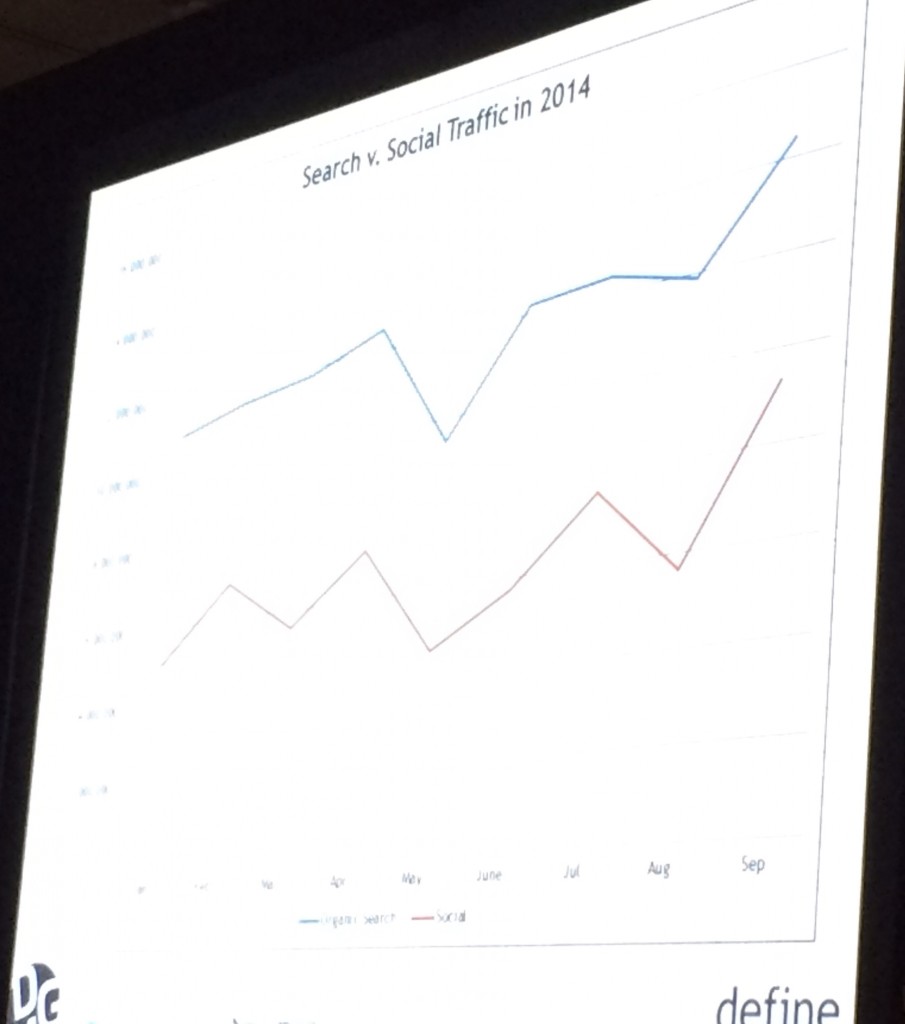
2. Image Search
In 2013 Google changed how image search worked and no longer loaded the page where an image was present, showing just the image. Image traffic plummeted that week (April 2013).
Google said the change was a win for webmasters who had previously been confused by “phantom visits.” How’s this for a net win?
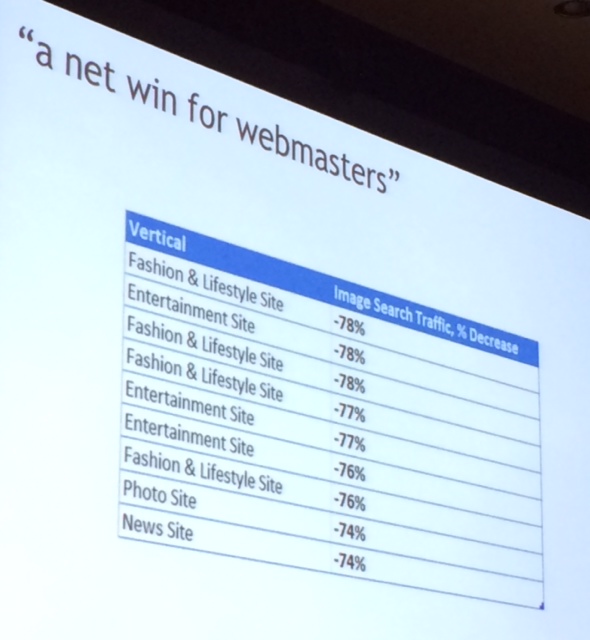
If you have a vast image database, Simmonds recommends watermarking images so users have to click through to see the image. Look at Pixabay for an example, and they’ve shared their results. This is an evolution of strategy. It looks like image traffic is dead and is not a viable strategy.
Solutions:
- Still optimize images for contextrual relevancy; Google may change course
- Image traffic is no longer a consistent source of traffic; deemphasize this in strategy
- Use Bing or Pixabay
3. Log File Analysis
There was a discrepancy when they compared daily spider visits and crawl stats in GWT.
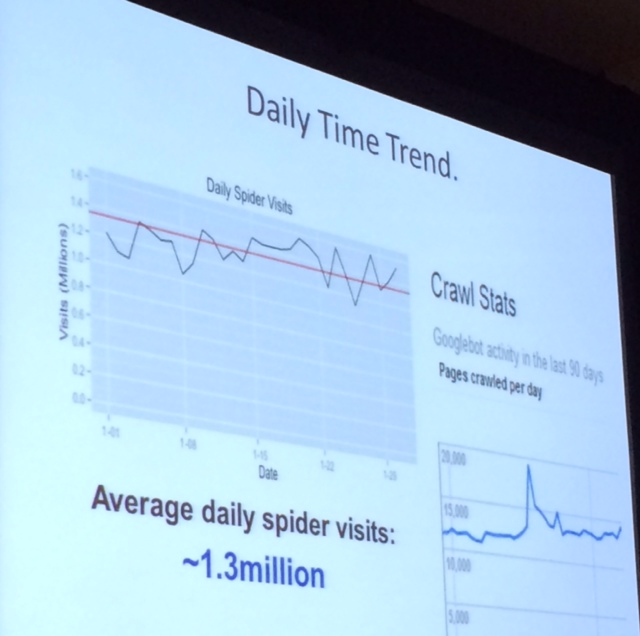
You can’t trust the company “who doesn’t trust you with your own keyword data.” Splunk! is a tool that will mark up your data and make it sexy, so it fends for SEO. You can find where Googlebot is going on your site.
One way they used this data is seeing where Googlebot was traveling through the site. It wasn’t the most popular, it isn’t the places with the most links and it isn’t where the most traffic goes. Googlebot was found most in the Business section of this media site because it was the hub of the site and touched all other sections of the site. The strategy they created from that was that when new content was created, they made sure it was linked to from the Business section. Weblogexpert is an example of another tool that does something similar.
He recommends looking at the direct channel as a future optimization channel.

LEAVE A REPLY





